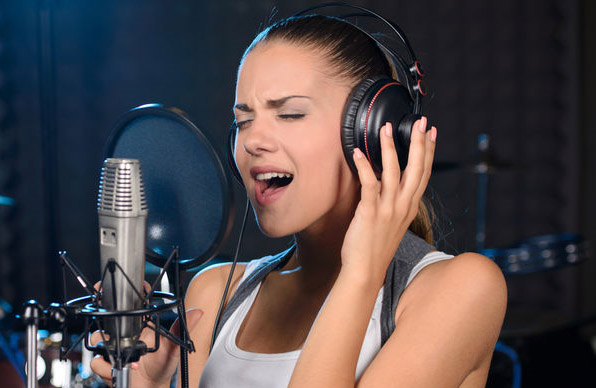
I liked the Phanthera into a Neve 1073 module followed by an UA 1176LN (Rev D) limiter for recording Pat Benatar’s vocal. The Phanthera will handle all the loud level Patty can produce right on top of it without clipping.
The Neve 1073, like all old Neve modules, doesn’t sound good in clip and is a little unforgiving with regard to getting an exact gain setting so I set it a little low for the additional headroom.
After compression, I made up the record level within the very distinctive sounding 1176LN. Between the thickness of the Neve, the gritty edge of the 1176LN, and the pristine sound capture of the Brauner, this is a killer rock vocal sound signal chain.
EQ & Compressors
Generally adding equalization in the recording is to make up for what the microphone is not giving you. In some studios, there is not a big choice of mics so you have to add or carve out frequencies to try and mimic the sound you’d get automatically with the right mic. Along with a signal chain, owning a few classic vocal mics is an obvious asset for a recording engineer.
Again, unless requested by the producer or artist, I go very conservative when recording with EQ. For example, if you are adding a lot of low frequencies, there is something wrong with the microphone or the pre-amp or more likely the way the singer is addressing the mic.
If you’re finding that adding a lot of high frequencies sounds better then you’ve got the wrong mic, as if you were using an old RCA 77BX ribbon but really were looking for the ultra bright sound of a modern Sony C800G condenser.
The same goes for compression. There is a wealth of sonic possibilities using vocal compression especially with vintage classics like the Fairchild 670 limiter.
I love those sounds but when and how much depends very much on the “bigger picture” – the mix!
If you and/or the producer are unsure, compress only enough (at a low ratio) to get it recorded at a good level without distortion and errant peaks—and then back the compression down from there. For a “vibey” sound, go with a tube compressor like the TubeTech CL1-B or UA Teletronix LA-2 leveling amp.
Cleaner or more transparent compression comes from VCA-based units such as a dbx 165. You could also record the vocals on two tracks: one with compressor and the other without. I like to provide as many options for the mixer as possible.
